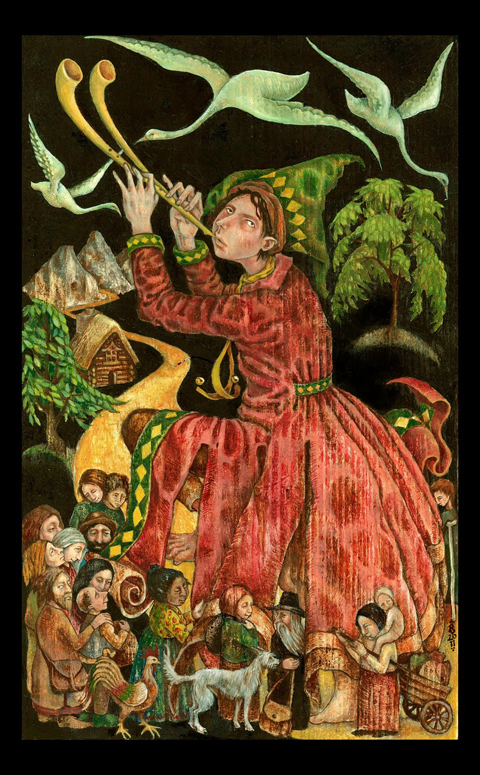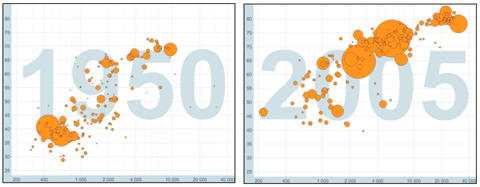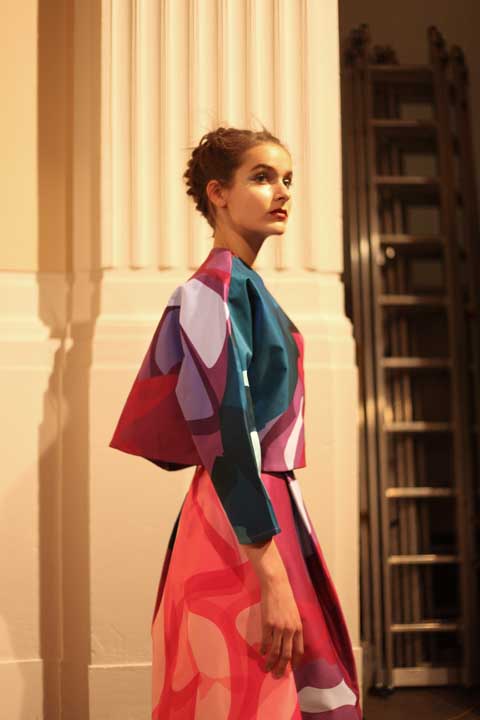
Dark Mountain issue 2 cover by Rima Staines.
What have you been doing since the last Uncivilisation Festival? It’s been over a year and I presume you’ve been suitably busy…
Yes, viagra last year’s Uncivilisation does feel like a long time ago. I think it’s safe to say that neither Paul Kingsnorth nor I had ever imagined we’d find ourselves running a festival. It happened by accident. We were writers, we’d written a manifesto with the idea of starting a journal of stories and ideas — and then we got invited to use this venue in Llangollen for a weekend to bring together all these people for whom the manifesto meant something. It was an intense experience. (Read our post 2010 festival interview with Dougald Hine.)
Afterwards, we took some time out to reflect and decide what we wanted to do next. We started to hear from people who were running their own Dark Mountain events, which was very cool, and from bands who were releasing records inspired by the project. It’s a humbling experience, seeing other people respond to something you’ve written and take it to completely unexpected places, and do something beautiful with it.

Cernunnos – from Dougie Strang’s Liminal.
We knew we were going to do another book. We had writers getting in touch who we’d really admired, people like David Abram and Naomi Klein, and new writers sending us amazing work that spoke from the middle of the chaos we’re living through, or from the wild places at the edges. And as Issue Two came together, we realised we had to do another festival. There’s only so far you can go in print, or online. Beyond a certain point, you need to create spaces for people to come together face to face, to have conversations, to laugh and cry and hold onto each other. So yes, Uncivilisation is back, another gathering of stories and ideas, performances and encounters.

Mark Boyle at last year’s Dark Mountain Festival.
What are your feelings about climate change thinking and activism at the moment in the UK and worldwide? And in terms of the other associated problems we face? A lot has changed since May 2010…
It feels like there’s a new conversation opening up, with a rawness and an honesty to it. I’m thinking of the piece Shaun Chamberlin wrote after Just Do It the film came out, and also of an article of George Monbiot‘s from a couple of months ago. You compare that to the debates we had with George in the first year or so of Dark Mountain, which feel pretty sterile to me in retrospect, and there’s a sense that even as the situation becomes more desperate, in many ways, people are reaching deeper into themselves.

The roundwood timber frame classroom at the Sustainability Centre built by Ben Law. Photo courtesy of Permaculture.
And meanwhile, I think it’s dawning on many more people just what a multi-layered mess we’re in. The entanglement between the ecological crisis and the social and economic unravelling of the world we grew up in. I’m struck by how fast history seems to be moving these days, how quickly the ground of “normality” is shifting. Even in mainstream politics, the fabric is wearing thin, the gap between the official version of reality and people’s lived experience becomes more obvious.

Huckleberry Mockingbird.
What will be different about this year’s festival?
It feels like we’re consciously approaching it as a journey that people go through. You arrive and you’ve left behind your everyday life, and you need permission to enter into this other kind of space, where it’s safe to feel things and have conversations you might not do with your colleagues or your friends back home. So the first night is full of magical performances, feral choirs and storytellers and lyrical boat-dwellers and music by lamplight.

Marmaduke Dando.
Then the Saturday daytime is where we can have big conversations about the past and the future, going into the ways people have made life work and made life meaningful in difficult times. By the Saturday night, you need to let your hair down, so we’ve got some real party music with bands like Merry Hell. Then on Sunday, as you’re turning for home, there’s more space for sessions about practical projects building parallel infrastructure and ways of getting involved in things back in the day-to-day world that have an edge of deep resilience, that allow you to take back some of the meaning and perspective that Dark Mountain is hopefully making room for.

What special new speakers and activities are you particularly excited about and why?
Personally, I’m looking forward to Tom Hirons‘ storytelling on the Friday night, and the Collapsonomics panel on the Saturday morning. That’s going to be a group of speakers who have personal experience of living through economic and social crisis — in the USSR, in Ireland and Iceland. They’re also all people who have an inside understanding of how the systems we depend on work, financial systems, tech systems. I’m expecting to learn a lot from that conversation.

Graph to show life expectancy and financial equality, from Vinay Gupta’s website.
And there are a couple of people who really stood out last year, who I’m really delighted are coming back. Vinay Gupta, who I’ll be interviewing on the Saturday afternoon, who’s this extraordinary hybrid between a Scots engineer and an Indian mystic, talking about these deeply practical projects he develops for working in the aftermath of disasters, but also the roots of his ability to think clearly about this stuff in the tradition of the ‘kapilika’, ‘the bearers of the skull bowl’, constantly facing your own mortality. And Jay Griffiths, who was one of the most moving speakers last year, she’ll be back to talk about the songlines and dream-shrines of West Papua.

Why did you choose to host this year’s Uncivilisation Festival at the Sustainability Centre? How many people do you hope will attend?
One thing we learned from last year is that the festival is as much about the people you meet as the speakers or the bands you see. So we wanted a venue with lots of space for conversations, walks in the woods, gatherings around campfires. We’re expecting about three hundred people, this time. It’s important to us that it’s a human-scale event, that there’s chance for us to meet people and hang out with them.

The philosophy of Dark Mountain has been described as moody, poetic and a bit devoid of hope. How do you respond when people say this to you?
To be honest, I know this is an impression people sometimes have at second- or third-hand, but it’s not something I get asked much by people who’ve actually had any contact with us. If you check out the video of people at last year’s festival, ‘hope’ is actually one of the words that comes up when people try to describe what they’ve experienced.
Now, that might seem strange, given that the starting point for Dark Mountain is admitting how deep a mess we’re in — letting go of the fantasy that we can take control of this reeling world, which, for all the wonders of science, we only partly understand. But hope is a strange thing — it’s not the same as optimism, or having a plan. It’s an attitude, a way of being in the world, treating each other well and finding meaning, even in the dark times. Go back to the Greek myths, and the last thing out of Pandora’s Box, after all the evils of the world, is hope.

Get Cape. Wear Cape. Fly.
What’s next for the Dark Mountain Project?
We’re going to take some time out this autumn, before we come back and start working on the next book and the other plans we’ve been brewing. For me, it will be a time to weave some of the threads from Dark Mountain into the other things I’m working on — The University Project, where we’re creating new pockets and pathways for the cultivation of knowledge, and Space Makers, and the patchwork of other people and projects I’ve been stumbling across which share this search for what works and what makes life meaningful, when the future hasn’t turned out the way the grown-ups said it would.
See my full listing for Uncivilisation here. Anyone who is interested in positive ways that we can tackle multiple crises together should put the dates in the diary right now: 19th-21st August, and book those tickets now.
Written by Amelia Gregory on Friday July 22nd, 2011 4:18 pm
Categories ,Cernunnos, ,Collapsonomics, ,Dark Mountain, ,David Abram, ,Dougald Hine, ,Dougie Strang, ,ecology, ,Financial Crisis, ,George Monbiot, ,Get Cape. Wear Cape. Fly., ,Huckleberry Mockingbird, ,Indian, ,Jay Griffiths, ,Just Do It, ,Liminal, ,Llangollen, ,Mark Boyle, ,Marmaduke, ,Marmaduke Dando, ,Merry Hell, ,Naomi Klein, ,Pandora’s Box, ,Paul Kingsnorth, ,Rima Staines, ,Scottish, ,Songlines, ,Space Makers, ,storytelling, ,sustainability, ,The University Project, ,Uncivilisation Festival, ,Vinay Gupta, ,West Papua
Similar Posts:























